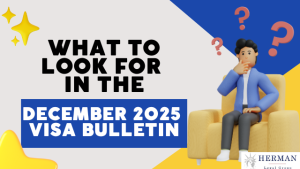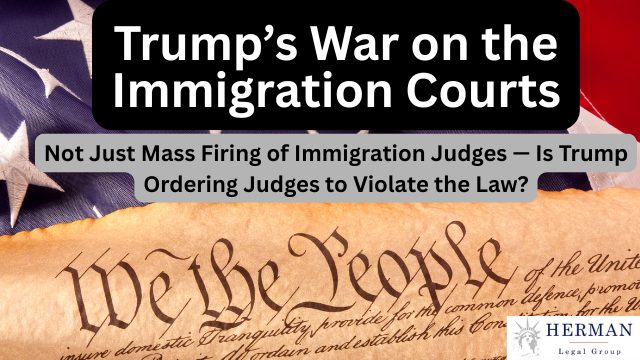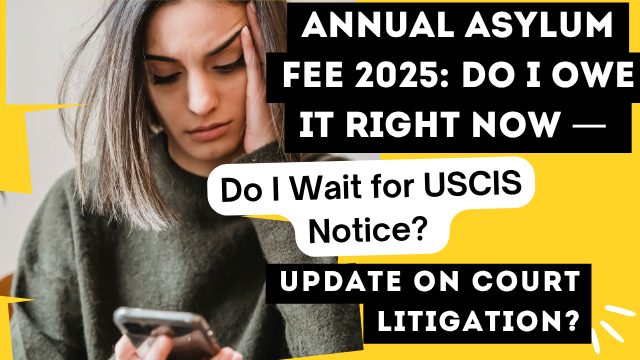The December 2025 Visa Bulletin is one of the most anticipated immigration updates of the year. Released by the U.S. Department of State (DOS) in mid-November, it determines when green-card applicants can file or receive approval under employment-based (EB) and family-based (FB) categories. The bulletin will indicate the status for that specific month only.
With demand at historic highs and processing backlogs stretching years, knowing when it will be issued, what trends to expect, and what it means for you can make all the difference. There are millions of people waiting for family-sponsored green cards and hundreds of thousands for employment-sponsored green cards.
As immigration attorney Richard T. Herman, founder of Herman Legal Group, explains:
“Timing is everything — early access to cutoff-date changes helps employers and families prepare filings before retrogression hits.”
This guide breaks down the key dates, policy influences, predictions, and strategies for applicants — with embedded links to official government resources and to Herman Legal Group’s detailed green-card and visa resources. The worldwide level for annual employment-based preference immigrants is at least 140,000.
Here is our guide on how to read the Visa Bulletin.
When Will the December 2025 Visa Bulletin Be Released?
The DOS typically releases each bulletin between November 10 and 15 for the upcoming month. For the latest edition, check the official U.S. Department of State Visa Bulletin page.
Why the timing matters:
- The instant the bulletin posts, thousands of applicants and attorneys adjust their filing plans.
- A few days’ delay can determine whether a filing qualifies under Final Action Dates (FAD) or Dates for Filing (DFF).
- Employers using H-1B portability or families seeking adjustment of status benefit from early preparation.
“Even small movements in the Visa Bulletin can create narrow filing windows,” notes Richard T. Herman. “Being prepared lets you act immediately when opportunity strikes.”
Key Trends to Watch in the December 2025 Bulletin
Employment-Based (EB) Categories
- EB-2 and EB-3 India & China – Expect limited forward movement or flat lines due to continued backlogs. Minor advancement of a few weeks is possible, but retrogression remains a risk. The November 2025 Visa Bulletin showed most EB final action dates remaining the same as October 2025.
- EB-1 Worldwide & EB-3 Rest of World – May see slight forward momentum (1–2 months) thanks to unused numbers from other regions.
- Impact of DOL Shutdowns: After the temporary DOL LCA system outage in October 2025, resumed processing could slightly boost case flow and reveal new demand by December.
Family-Based (FB) Categories
- F1 (unmarried adult children of U.S. citizens) and F3 (married adult children): Possible advancement of 1–6 weeks, depending on chargeability area. The Family-Sponsored Third Preference (F3) date for Mexico moved forward by two weeks.
- F2A (spouses & children of LPRs): Could stagnate due to heavy worldwide usage.
- F4 (siblings of U.S. citizens): Continues sluggish pace, possibly moving only a few days.
Early FY 2026 Demand Pressure
The bulletin reflects early-year visa demand from October 1 onward. Heavy filings in October–November 2025 could limit December advancement, especially in employment-based categories.
What the December 2025 Bulletin Means for You
Adjustment of Status (AOS) Applicants
If you’re adjusting status inside the U.S., check which chart USCIS authorizes for filing:
👉 USCIS Adjustment of Status Filing Charts
- Final Action Dates (FAD): When your visa number is actually available for approval.
- Dates for Filing (DFF): When you can submit your I-485 Adjustment of Status before your visa number is available.
- If USCIS uses the DFF chart for December, many applicants will be able to file early even without immediate visa availability.
For clarity on filing readiness, see Herman Legal Group’s employment-based green-card guideand family-based immigration overview.
Consular Processing Applicants
Outside the U.S., your visa interview scheduling depends directly on when your priority date becomes current.
- Current = ready for interview.
- Retrogressed = delayed until later movement.
Keep medicals, civil docs, and police certificates valid while you wait.
H-1B, F-1, and Other Nonimmigrant Visa Holders
If you’re on a temporary visa but pursuing a green card:
- Monitor how EB-2/EB-3 moves for your country of chargeability.
- Consider strategic timing for change-of-status filings or I-140 concurrent filings.
- Explore alternatives like National Interest Waivers (NIW) or O-1 extraordinary-ability visas.
SeeHLG’s complete employment-based green-card resources for deeper analysis.
How Political and Economic Factors Affect the Bulletin
- Project 2025 policy initiatives: Discussions about restructuring per-country limits, changing H-1B fees, and reducing family-based visas could indirectly affect December 2025 movements.
- Visa number “wastage”: If consulates and USCIS don’t process fast enough, unused numbers from FY 2025 may spill over unpredictably into FY 2026.
- Economic context: Strong post-pandemic hiring in health tech and AI industries (especially in Ohio, California, and Texas) increases EB-2/EB-3 usage.
- Backlog from DOL shutdown: Temporary disruption to LCAs and PERMs in October 2025 may cause a short-term pause in filings but an early 2026 surge. The 7% country cap can lead to long backlog wait times, particularly for citizens of China, India, Mexico, and the Philippines.
“Each Visa Bulletin reflects the intersection of law, politics, and bureaucracy,” says Richard T. Herman. “Understanding those levers helps immigrants navigate uncertainty.”

Historical Patterns and December 2025 Predictions
| Category | Trend (Dec 2025 Prediction) | Notes |
|---|---|---|
| EB-1 Worldwide | +1 month | Demand steady but manageable. |
| EB-2 India | 0 to +2 weeks | Still oversubscribed; minor advance possible. |
| EB-3 India | Flat / Hold | Heavy demand likely freezes movement. |
| EB-2 China | +3–4 weeks | Possible spillover from ROW. |
| F1 Mexico | +4–6 weeks | Slight recovery from fall backlog. |
| F3 Philippines | +3–5 weeks | Modest forward progress. |
| F4 All Countries | Minimal | Long-term backlog persists. |
Data compiled from prior bulletins via travel.state.gov and attorney predictions from shusterman.com.
For monthly analyses and filing guidance, see Herman Legal Group’s Visa Bulletin archive.
Understanding Priority Dates and Cut-Off Movements
Priority Date
The priority date marks when your petition or labor certification was filed — it determines your spot in the queue.
When your date becomes “current” on the bulletin, your visa number is available. Your priority date can be found on your I-797, Notice of Action or Receipt Notice.
Common Terms
- “C” = Current: No backlog.
- “U” = Unavailable: Category temporarily maxed out.
- Retrogression: Cut-off date moves backward.
- Advancement: Cut-off date moves forward.
For step-by-step visuals, see HLG’s explainer: How to Read the Visa Bulletin (Herman Legal Group Guide).
What Applicants Should Do Now
- Monitor the Release Date
- Bookmark State Dept. Visa Bulletin and check mid-November.
- Check Which Chart Applies
- Verify via USCIS Filing Charts.
- Prepare Documents Early
- Gather job offers, medical exams, civil docs, and affidavits before the cutoff moves.
- Avoid Premature Filings
- If your category risks retrogression, plan with your attorney to avoid unnecessary fees.
- Explore Alternative Options
- Learn about National Interest Waivers (NIW), Extraordinary Ability O-1 Visas, or concurrent filings.
- Get Legal Guidance
- Schedule a strategy session with an experienced attorney at Herman Legal Group.
Expert Tip: “The most successful applicants plan two months ahead of each bulletin — not after it’s released,” says Richard T. Herman.
Comparison: Leading Tech-Focused Immigration Law Firms
| Law Firm | Location(s) | Specialty & Highlights |
|---|---|---|
| Herman Legal Group | Nationwide (U.S.), HQ in Ohio + offices in Cleveland, Columbus, Akron, Dayton, Cincinnati, Youngstown | 30 + years’ experience; serves employers and families in tech, healthcare & education. Known for individualized green-card strategy. |
| Alcorn Immigration Law | Silicon Valley, CA & New York | Premier startup & tech-founder immigration firm; strong O-1, H-1B and founder visa practice. |
| Murthy Law Firm | Nationwide (TX + MD + CA presence) | High-volume corporate immigration firm specializing in H-1B and employment-based green cards for tech workers. |
| Hodgson Russ LLP | New York State & Canada border region | Serves cross-border tech and energy companies; corporate and compliance focus. |
Why this matters:
Applicants working in the tech industry often benefit from law firms experienced with corporate visa strategy and complex priority-date management. Herman Legal Group distinguishes itself through personalized, bilingual service and nationwide representation for employers and families across all immigration categories.
Key Takeaways
- Release Date: December 2025 Visa Bulletin expected mid-November 2025.
- Trends: Modest EB-2/EB-3 India & China movement; minor family-category advances.
- Policy Context: Project 2025, DOL delays, and visa-number allocations influence cutoffs.
- Action Steps: Check the charts, prepare docs, stay alert for retrogression, consult your attorney.
- Legal Help: For individualized guidance, contact Herman Legal Group — serving clients nationwide with 30 years of immigration law experience.
Author:

Richard T. Herman, Esq. — Founder of Herman Legal Group, co-author of Immigrant, Inc., and nationally recognized immigration law expert.








